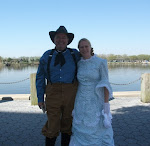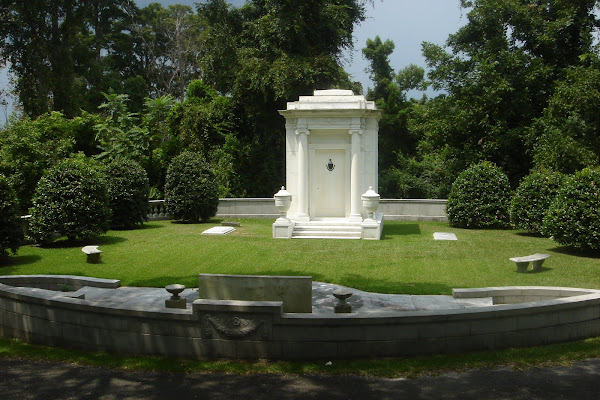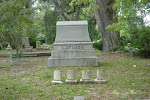e mail us @ lori.touroldwilmington@gmail.com
History Walking Tours

Open Year Round
3rd Graders on Tour!

History Walking Tour for all ages!
Fort Fisher
Until its capture by the Union army in 1865, Fort Fisher port
of Wilmington U.S. Wilmington
Fort Fisher Union had loaded a warship
with 185 tons of gunpowder and floated it approximately 200 feet from the “L”
shaped fort. The fort withstood the explosion and the ensuing
barrage that has been described as “the most awful bombardment that was ever
know for the time.”
Confederate fortune ran out in January 1865. On January 12, Union ships bombarded the fort. Some have estimated the Union firepower to be approximately 100 shells per minute. The incessant Union fire continued until mid-day on January 15, when Union troops stormed the fort from all sides. Hand-to-hand combat ensued. A few hours later, Union troops captured the fort. With the fort’s capture, the Confederacy lost only remaining supply line to its infantry protecting the Confederate capital,Richmond , Virginia
Confederate fortune ran out in January 1865. On January 12, Union ships bombarded the fort. Some have estimated the Union firepower to be approximately 100 shells per minute. The incessant Union fire continued until mid-day on January 15, when Union troops stormed the fort from all sides. Hand-to-hand combat ensued. A few hours later, Union troops captured the fort. With the fort’s capture, the Confederacy lost only remaining supply line to its infantry protecting the Confederate capital,
Sources:
John G. Barrett, The
Civil War in North Carolina (Chapel Hill, 1963); John S. Carbone, The
Civil War in Coastal North Carolina (Raleigh, 2001); William S. Powell ed.,
Encyclopedia of North Carolina (Chapel Hill, 2006); William S. Powell, North
Carolina Through Four Centuries (Chapel Hill, 1989).
See Also:
Related
Categories: Civil War
Related Encyclopedia Entries: John W. Ellis (1820-1862), Bunker Hill Covered Bridge, Secession, Salem Brass Band, Confederate States Navy (in North Carolina), United States Navy (Civil War activity), James Iredell Waddell (1824-1886), CSS Neuse, USS Underwriter, Warren Winslow (1810-1862), Prelude to the Battle of Averasboro, The Battle of Averasboro-Day One, Louis Froelich and Company, Louis Froelich (1817-1873), North Carolina Button Factory, CSA Arms Factory, Ratification Debates, Peace Party (American Civil War), Braxton Bragg (1817-1876), Daniel Harvey Hill (1821-1889), Battle of Bentonville, Bryan Grimes (1828-1880), Fort Hatteras, Fort Clark, Fort Macon, Daniel Russell (1845-1908), The Impending Crisis of the South: How to Meet It, Union League, Incidents in the Life of a Slave Girl, Levi Coffin (1798 – 1877), Raleigh E. Colston (1825 - 1896) , Thomas Fentriss Toon (1840-1902), Robert Fredrick Hoke (1837-1912), Battle of Forks Road, Aaron McDuffie Moore (1863-1923), Harriet Jacobs (1813-1897) , Fort Anderson (Confederate), Battle of Deep Gully and Fort Anderson (Federal), James T. Leach (1805-1883), Sarah Malinda Pritchard Blalock (1839-1903), Thomas Bragg (1810-1872), Curtis Hooks Brogden (1816-1901), John Motley Morehead (1796-1866), David Lowry Swain (1801-1868), Zebulon Baird Vance (1830-1894), Alamance County (1849), Gates County (1779), Clay County (1861), Lenoir County (1791), Union County (1842), Teague Band (Civil War), Fort Hamby Gang (Civil War), Shelton Laurel Massacre , Parker David Robbins (1834-1917), Henry Eppes (1831-1917), Washington County (1799), Hertford County (1759), Rutherford County (1770), Granville County (1746), Salisbury Prison (Civil War), Stoneman's Raid, James City, Fort York, Asa Biggs (1811 - 1878), Thomas Clingman (1812 - 1897), Matt W. Ransom (1826 - 1904), St. Augustine's College, Peace College
Related Commentary: Toward an Inclusive History of the Civil War: Society and the Home Front, Edward Bonekemper on the Cowardice of General McClellan
Related Lesson Plans: Discussion of the Lunsford Lane Narrative
Timeline: 1836-1865
Region: Coastal Plain
Related Encyclopedia Entries: John W. Ellis (1820-1862), Bunker Hill Covered Bridge, Secession, Salem Brass Band, Confederate States Navy (in North Carolina), United States Navy (Civil War activity), James Iredell Waddell (1824-1886), CSS Neuse, USS Underwriter, Warren Winslow (1810-1862), Prelude to the Battle of Averasboro, The Battle of Averasboro-Day One, Louis Froelich and Company, Louis Froelich (1817-1873), North Carolina Button Factory, CSA Arms Factory, Ratification Debates, Peace Party (American Civil War), Braxton Bragg (1817-1876), Daniel Harvey Hill (1821-1889), Battle of Bentonville, Bryan Grimes (1828-1880), Fort Hatteras, Fort Clark, Fort Macon, Daniel Russell (1845-1908), The Impending Crisis of the South: How to Meet It, Union League, Incidents in the Life of a Slave Girl, Levi Coffin (1798 – 1877), Raleigh E. Colston (1825 - 1896) , Thomas Fentriss Toon (1840-1902), Robert Fredrick Hoke (1837-1912), Battle of Forks Road, Aaron McDuffie Moore (1863-1923), Harriet Jacobs (1813-1897) , Fort Anderson (Confederate), Battle of Deep Gully and Fort Anderson (Federal), James T. Leach (1805-1883), Sarah Malinda Pritchard Blalock (1839-1903), Thomas Bragg (1810-1872), Curtis Hooks Brogden (1816-1901), John Motley Morehead (1796-1866), David Lowry Swain (1801-1868), Zebulon Baird Vance (1830-1894), Alamance County (1849), Gates County (1779), Clay County (1861), Lenoir County (1791), Union County (1842), Teague Band (Civil War), Fort Hamby Gang (Civil War), Shelton Laurel Massacre , Parker David Robbins (1834-1917), Henry Eppes (1831-1917), Washington County (1799), Hertford County (1759), Rutherford County (1770), Granville County (1746), Salisbury Prison (Civil War), Stoneman's Raid, James City, Fort York, Asa Biggs (1811 - 1878), Thomas Clingman (1812 - 1897), Matt W. Ransom (1826 - 1904), St. Augustine's College, Peace College
Related Commentary: Toward an Inclusive History of the Civil War: Society and the Home Front, Edward Bonekemper on the Cowardice of General McClellan
Related Lesson Plans: Discussion of the Lunsford Lane Narrative
Timeline: 1836-1865
Region: Coastal Plain






















